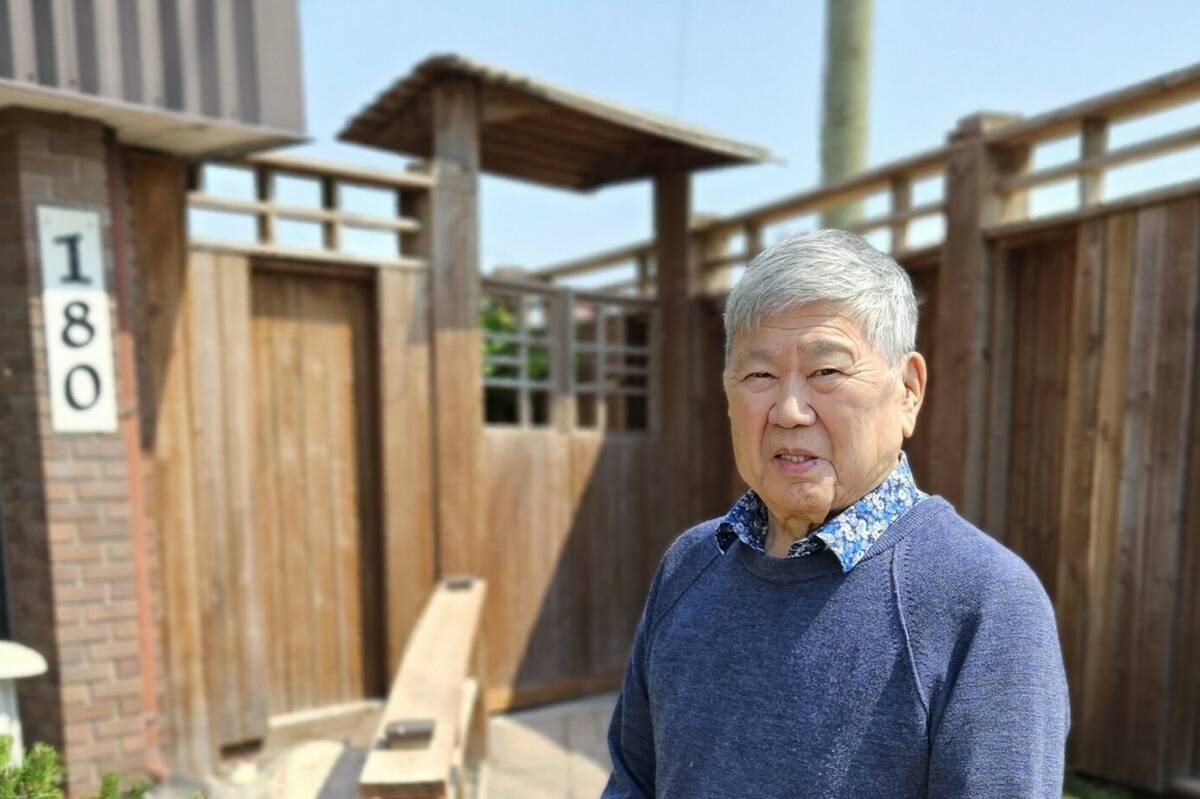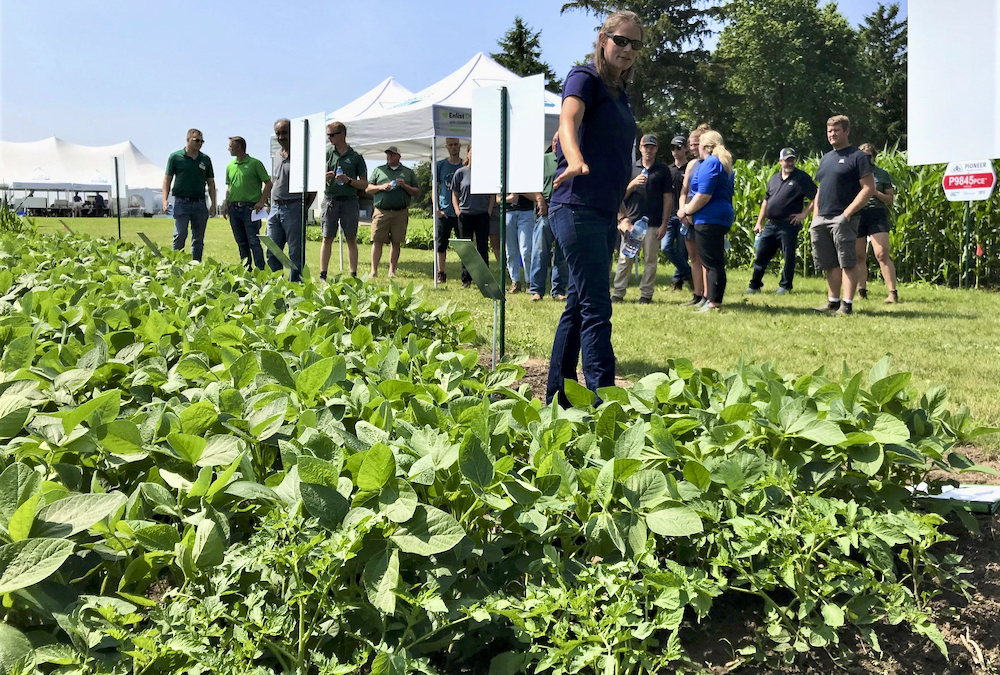As it anticipates a significant increase in the soybean seed market share for its Enlist-branded herbicide-resistant varieties, Corteva Agrisciences hosted dozens of Pioneer and Brevant sales representatives for a research station plot tour on July 5 near Tavistock.
The company’s top Canadian sales and research and development staff sat down with members of the farm media for a pre-tour explanation of the Enlist system’s trajectory since it was introduced on a limited basis in 2019.
Why it matters: Corteva’s goal is to see over half the soybean acres in eastern Canada planted to Enlist-compatible varieties by 2025 and the company says early indications show that’s achievable.
Read Also

The forced Japanese-Canadian farmers of the Second World War
Manitoba’s sugar beet farms drew on displaced Japanese-Canadians from B.C. during the Second World War
“The breeders (supplying seed to Corteva) are excited because the bottleneck has been released,” said technical services manager Dave Harwood during the pre-tour interview.
Enlist genetics, featuring tolerance to 2,4-D choline, glyphosate and glufosinate within one gene, are now available on a range of Pioneer and Brevant varieties.
A year ago, under the banner “Series A Enlist,” the genetics were available on a smaller subset of varieties that Corteva saw as its most important in terms of offering other agronomic traits targeting soybean cyst nematode, white mould and sudden death syndrome.
During the first phase of introduction, commercial availability was restricted in Canada and the U.S.
At that time, said product agronomist Sheila Murphy, the Canadian soybean sector was keen to avoid the high-profile disputes that their American counterparts faced over damage to non-target crops due to volatilization in high temperatures by widely used dicamba-based herbicides.
Genetically modified technologies for corn and soybeans, in the development pipeline since the mid-2010s, provide a solution for dicamba’s troubles through a patented “choline salt” version of 2,4-D that doesn’t transform – as dicamba does – from a solid to gaseous form as the temperature rises.
“The 2,4-D molecule we’re using in this system stays where it’s put … and that’s a huge thing for a chemical to have that characteristic,” said Harwood.
At the Tavistock plot, tomatoes were transplanted directly beside the soybeans and were not damaged by Enlist herbicide spray.
“Even with the Enlist system, if there are sensitive crops, you need to be very careful,” Harwood said. “But it’s not like dicamba.”
Murphy described Enlist as Corteva’s “flagship technology” and, speaking to the seed sales reps gathered for the tour, explained that “the cool thing for me is that it’s a molecular stack” with all three tolerance traits on a single gene.
That leaves open the possibility that breeders can “park” other traits – such as disease resistance or drought tolerance – at other locations of the DNA.
The July 5 tour focused on soybeans but Corteva also has an Enlist corn system, with the seeds containing tolerance to 2,4-D, glyphosate and glufosinate, as well as the FOP sub-group of Group A herbicides targeting grasses.
The Enlist 1 version of the program allows growers to use Enlist herbicide in a mix with another product – typically either a glyphosate product like Roundup or a glufosinate product like Liberty. The Enlist Duo version of the program provides a premix of Enlist with glyphosate.
“We’re probably never going to be the cheapest source of glyphosate but people like the convenience,” said David Kloppenburg, portfolio marketing manager for row crop herbicides.
In Canada this year, about two-thirds went with Enlist 1 and one-third went with Enlist Duo. In the U.S, sales were weighted even more towards Enlist 1. At this point, there are only larger totes of Enlist 1 available so some people may have chosen Enlist Duo because they didn’t want the larger totes.
Smaller totes of Enlist 1 are expected to become available so Corteva expects to eventually see even more of a shift towards Enlist 1.
Its recommended management system is to save Enlist for the in-crop application. For pre-emergence in soybeans, it advises another product – typically either Liberty if worried about glyphosate-resistant weeds or Roundup if worried about grass-heavy weed populations.
A similar decision-making process would unfold in corn, taking into account broadleaf protection.
Asked for a show of hands, several members of the sales-force audience indicated they had sprayed Enlist for the first time this year.
Territory manager Grace Jones explained some potential crop responses to Enlist. Leaf drooping, which she likened to the temporary effect sometimes seen in corn after spraying Marksman, typically lasts between 24 and 36 hours but plants eventually recover and there are no yield effects.
“The droop can be upsetting when you first see it but they do bounce back.”
In what she described as “leaf necrosis,” there can be some speckling of leaves in hot weather when certain additional products are in the sprayer mix. Again, Corteva’s research plot experience indicates any new growth will not have the speckling and there will be no yield impact.
If spraying Enlist soybeans with dicamba, they’ll die. If you treat Extend soybeans – which are dicamba-tolerant – with Enlist technologies, they’ll die.
So, it is very important to ensure clean sprayers and to know what variety is in which field.
Seed reps were told to discourage growers from putting only a bit of water in the sprayer before adding their product. Make sure to get it half full first, and add products sequentially, according to the Enlist label. One rep reported a sludge-like substance developing in the sprayer and was told that’s probably because the choline active ingredient “salted out” due to improper sprayer mixing protocol.
He said it still sprayed fine because he was able to agitate it, but agitation at that point isn’t always possible.
Enlist can be used all the way up to the R2 stage (full flower).
If spraying is delayed until later in the season, there are opportunities for a tank mix with a fungicide or with something like the Corteva-owned Utrisha biological for increasing phosphorus uptake.















